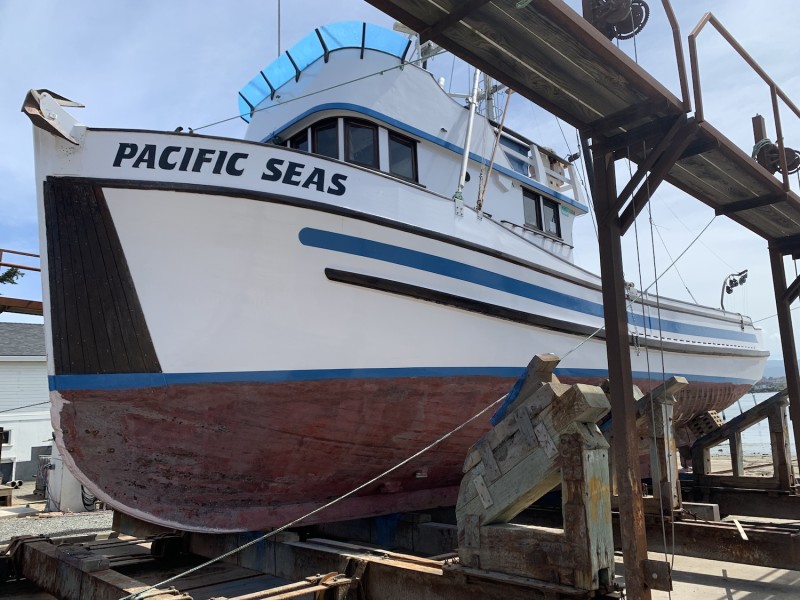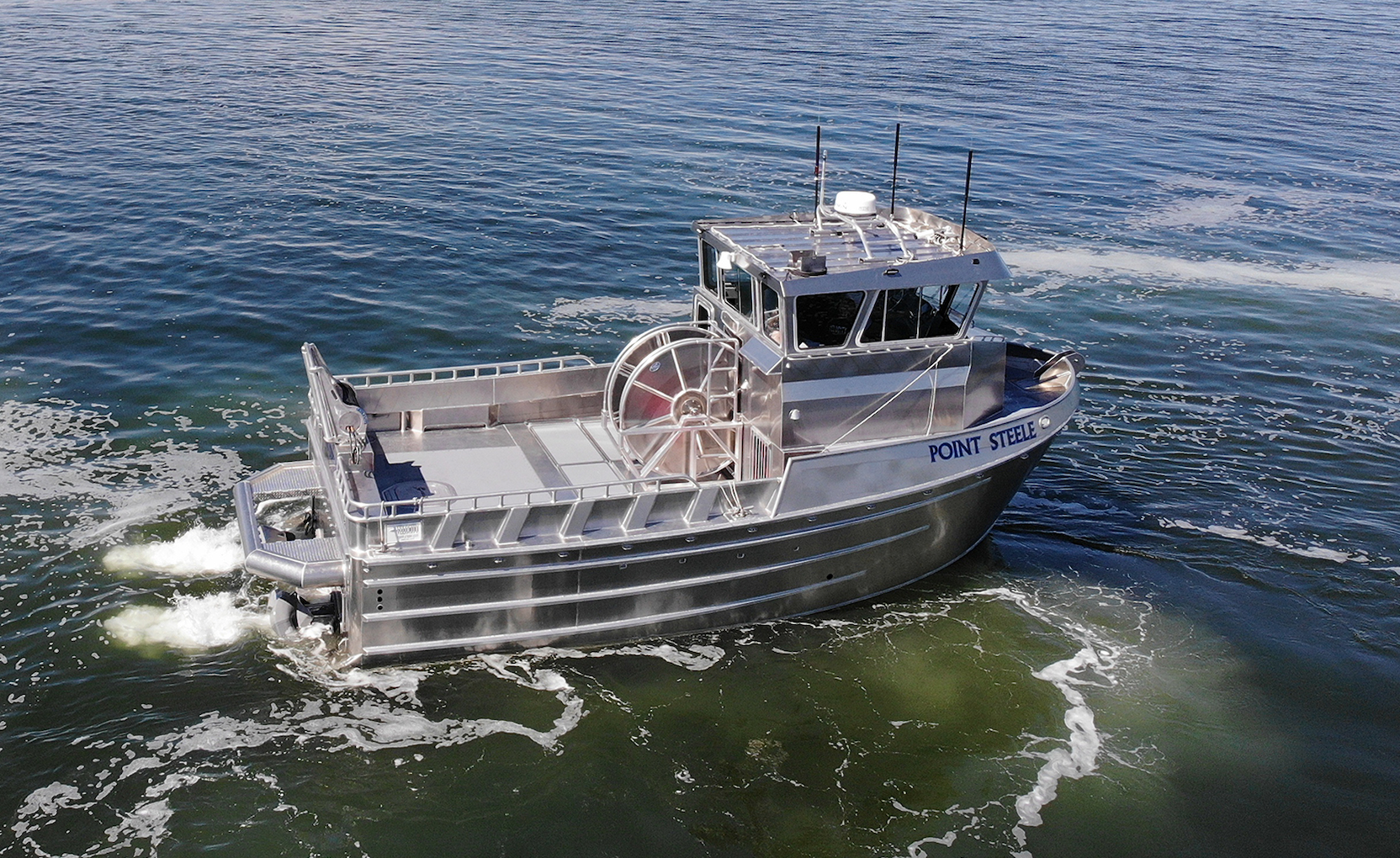Velocity Marine and Fabrication launched two 32' x 16' Bristol Bay tophouse gillnetters for the 2020 season from its Sedro Wooley, Wash., boatshop. First in the water in late March was the Novarupta with a 750-hp Scania D13 matched up with a Thrustmaster HI500 jet. (The Novarupta is named after the largest volcanic eruption of the 20th century, which occurred on June 6, 1912, and lasted for 60 hours in Alaska’s Katmai National Park.)
The Point Steele followed the Novarupta with a launching the first week in May. The Point Steele has a pair of 600-hp Cummins QSC8.3 diesels powering Ultrajet 340HT jets through ZF305 gears.
Rob Smith, Velocity Marine’s owner describes the Novarupta as “a pretty standard, single engine, single jet tophouse Bristol Bay boat.” She’ll pack 18,000 pounds below deck and has a 7.5-ton Pacific West Refrigeration RSW system. On sea trials the Novarupta hit 30 knots. In mid-May she was being barged to Bristol Bay.
Smith feels that while a number of tophouse Bristol Bay gillnetters have been built this year, the Point Steele is “the only twin engine, twin jet tophouse.” It’s set up for a crew of six with four bunks in the fo’c’sle and a twin convertible bunk in the wheelhouse for the captain and his wife. The Point Steele has a 10-ton RSW system from Pacific West Refrigeration. The twin-jet power package pushed her to 38 knots on sea trials. The Point Steele left for Bristol Bay under her own power on May 19.
Both gillnetters carry the same Kinematics Marine Equipment deck gear, consisting of a 16" x 10" (wide) anchor winch, gillnet drum with automatic level wind and a 36-inch hydraulic net roller.
Smith says covid-19 hasn’t had a major impact on Velocity Marine, other than somewhat slowing up work when “a handful of crew elected to take time off. But we were able to keep going.” Other than some orders being a week or two late, his suppliers “have been pretty consistent.” However, he does trace the fact that “no one is buying or hardly calling about (new) Bristol Bay boats,” to coronavirus. He expects that to change in the next few months.
Next up in Velocity Marine’s building bays will be a 30' x 11' crabber for Puget Sound, to be powered by a pair of 300-hp outboards. There’s also three landing craft, a 26-footer going to Juneau, and a pair of 30-footers for Puget Sound.
David Peterson specializes in repairing wooden commercial fishing boats in Eureka, Calif., and, as usual, he’s been working on some older boats, in this case installing chafing gear, first on the Ryan Faith, a 54-foot crabber that was the Heidi Queen when she was built in the 1960s at Seaview Boatbuilders in Tacoma, Wash.
Currently he’s putting chafing gear on the Pacific Seas, a crabber and troller out of Eureka that started out as a dragger when she was built in 1967 by the brothers Fred and Nick Makela at Makela Boatworks in Fort Bragg, Calif.
The chafing gear goes on the hauling or starboard side, starting about 6 to 8 feet in front of the crab block and is carried all the way to the stern and from the rail to the chine. Peterson says he tends to make the chafing gear heavy, usually “7/8-inch or a full 1-inch thick. It’s like putting deep-tread tires on and usually lasts 30 years.” He uses lengths of 1" x 6" ipe — a tropical hardwood — rips them in half lengthwise with a bevel on the bottom, so a 3-inch-wide chafing strip fits the middle of every plank.
A few of the bigger jobs Peterson had lined up have been pulled back, “in light of coronavirus.” While boat owners are still doing regular maintenance, on a “big job — 15-, 20-, 30-grand — people are pulling back because they don’t know what’s ahead of them. Everybody’s just holding back.”

On a slightly smaller scale, when Peterson is done installing chafing strips, he will replace the port side of the Sea Pride’s wheelhouse; he previously rebuilt the starboard side. The Sea Pride, a crabber and albacore boat out of Crescent City, Calif., was originally the Smith Brothers No. 1 when built in 1923 by Madden and Lewis in Sausalito, Calif. It was rebuilt in the mid-1970s and “made to look like a 1950s salmon troller.” Peterson describes the Sea Pride as being “in very good shape” and with the rebuilt wheelhouse should be in even better shape.







